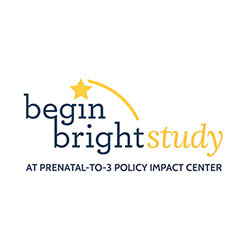By Jacque Whearty, Policy Manager
Imagine that you just found out you may qualify for the Supplemental Nutrition Assistance Program (SNAP), which will help you feed your two children. But first, you need to fill out several forms—one of which is confusing. If you fill the form out incorrectly, you might get denied. You can’t risk it, so you call an agent. You wait on hold for hours, eventually hanging up to go to work. Your questions go unanswered. You finally fill out the application but must request time off work for an in-person interview. You can’t afford to take the day off, but you have no other choice.
Families eligible for federal public assistance programs encounter this type of challenge every day. Onerous application requirements like redundant forms, in-person interviews, and frequent recertifications require participants to take time away from daily obligations, increasing the cost of program participation.
These programmatic barriers, termed administrative burdens, help states ensure only eligible families receive benefits. But these barriers end up costing even the eligible families their benefits by deterring them from applying. Administrative burdens also pose detrimental impacts for states and the economy at large.
What are administrative burdens?
Administrative burdens are the barriers that increase families’ costs of applying for and maintaining enrollment in federal public assistance programs—such as SNAP, Temporary Assistance for Needy Families, and Medicaid.
Although the federal government bears responsibility for determining who is eligible for federal policies and programs, states establish administrative burden policies. These burdens serve two roles: to curb fraud (i.e., to keep families who are ineligible for benefits from receiving them) and payment errors (i.e., to limit the likelihood that eligible families receive more or fewer benefits than intended).
How much do administrative burdens cost families?
According to experts Don Moynihan and Pam Herd, administrative burden manifests itself in three costs for families:
- Learning costs are the burdens of knowing how to navigate complex systems like the state government—or even knowing that you are eligible for public assistance programs.
- Compliance costs are the “time taxes” from applying for and attempting to maintain benefits. These inefficiencies arise from needing to fill out multiple forms, wait on hold with case managers, travel to in-person interviews, and the like. For hourly employees, these time taxes result in a very real financial penalty.
- Psychological costs are the emotional repercussions of applying for and enrolling in public assistance programs. These costs include the stigma and loss of autonomy that comes from program receipt, as well as the frustration with or distrust of government systems for imposing administrative burdens in the first place.
As you might imagine, these costs deter even eligible individuals from accessing public programs. Moynihan, Heard, and Harvey (2015) found that 40 percent of the folks eligible but not participating in SNAP were deterred by the paperwork and another 37 percent by the sheer number of hours required to complete the application.
Administrative burdens fall disproportionately on the families who would most benefit from the programs. Because the programs with the greatest administrative burdens are those supporting the lowest-income households, administrative burden most heavily impacts households headed by single mothers, the elderly, and people of color. As a result, these households are the least likely to receive the benefits they need to thrive.
Do administrative burdens help states?
States impose these administrative burdens on eligible families. So, these barriers should benefit the states, right?
Not always.
Designed to be isolated to the applicant, administrative inefficiencies spill over to the state employees responsible for managing applications and recertifications. Frequent calls into caseworkers, as well as forms that arrive late and with errors, all increase case wait times and backlogs. Recent research from Michigan found that overly complex application processes result in 200,000 unnecessary applications annually, costing the Michigan Department of Health and Human Services $25 million each year.
And then there is the economic cost. State economies suffer when eligible populations don’t get the support they need through safety net programs, income supports (such as the earned income tax credit and child tax credit), or health insurance. When families receive support from the programs for which they are eligible, they can better meet their basic needs. When families meet their basic needs, they are more productive at work and in the job search. They can also spend more on non-necessities, increasing overall consumer spending.
States can reduce poverty and inequity by reducing administrative burdens.
Reducing burdens on eligible people can reduce both poverty and inequity. Rigorous research shows that streamlining processes, especially by implementing combinations of low-burden policies, can increase take-up and participation among households who qualify for SNAP. For example, combining longer recertification intervals, simplified reporting on changes to household income, and online availability of application materials can reduce administrative burden and thus increase participation.
According to Ganong & Liebman (2018), implementing a combination of low-burden policies increased SNAP enrollment by 20.4% from 1996 to 2015, nearly twice the effect size on participation compared to that of any individual policy. A 2019 United States Department of Agriculture report found that states decrease their per-case cost by about 7% for each additional policy they streamlined.
When administrative burdens decrease, enrollment increases among eligible families. For instance, following the declaration of the Public Health Emergency in 2020, the federal government prohibited states from disenrolling anyone from Medicaid unless the beneficiary asked to be unenrolled, moved out of state, or died; Medicaid enrollment among eligible families increased by 30%. According to scholars at the Georgetown University Health Policy Institute’s Center for Children and Families, hundreds of thousands of children and parents will lose Medicaid due to procedural errors.
Recent research shows that reducing these burdens has bipartisan support, and states have begun to take action. For example, North Carolina’s Medicaid and Food and Nutrition Services programs have begun to streamline data coordination to determine if families who qualify for Medicaid also qualify for SNAP. Minnesota’s Department of Human Services has streamlined an online application process for safety net programs, enabling more families to access the benefits they need. Kentucky’s Cabinet for Health and Family Services launched Kynect, a benefits manager that helps residents screen for eligibility for multiple programs—such as Medicaid, SNAP, and child care assistance—as well apply for those programs all in one place. The Michigan Department of Health and Human Services similarly launched a pilot program with a simplified renewal process for public benefits and found 60% fewer applicant errors, 200,000 fewer hours of burden on caseworkers, and 15% more successful renewals.
These are not the only states making efforts to reduce administrative burdens for safety net programs. To learn more about the states who are making strides to reduce administrative burden for SNAP, check out our 2022 State Policy Roadmap. We are continuing to track states’ 2023 progress, and we will share our findings in October. Subscribe for email updates to get these insights in your inbox.



